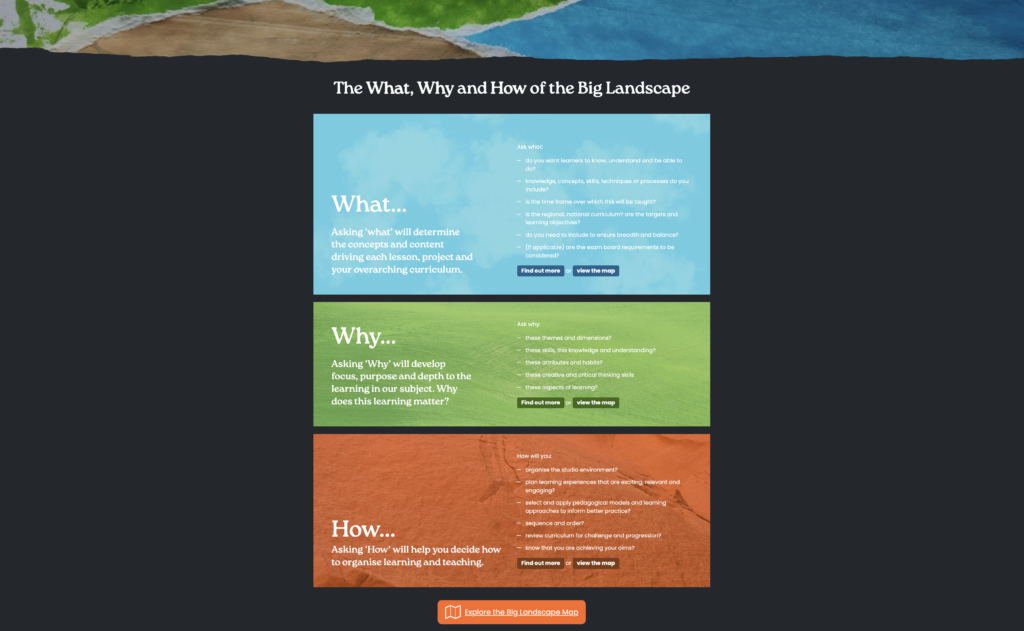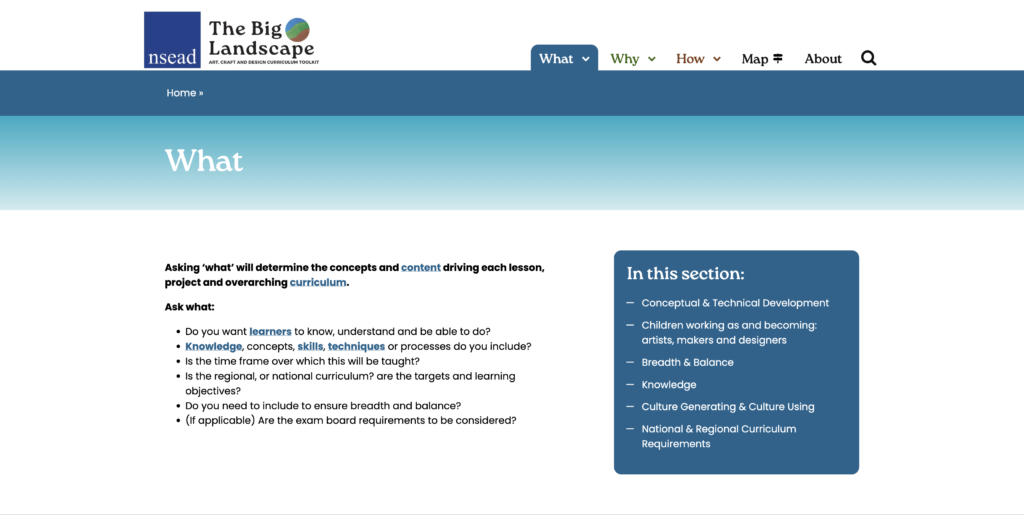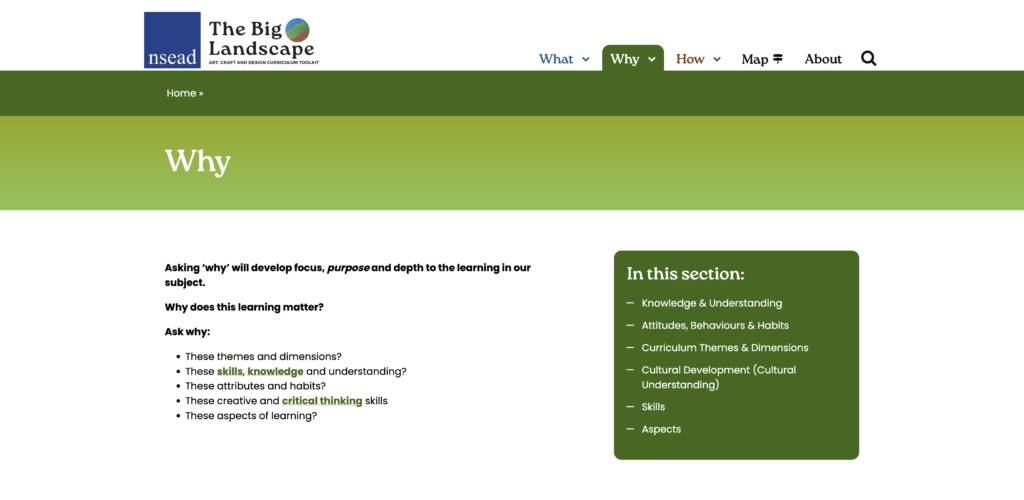In this section, we explain more about the Big Landscape, our philosophy and who will find it helpful.
What is the Big Landscape?
‘The Big Landscape can be used to start school-wide or departmental conversations, using key questions as prompts. In line with school values and ethos, it will help to explore and select the relevant knowledge skills, content and processes, habits and behaviours and attributes needed so that your learners become the consumers and creators of the visual and physical world.’ Ged Gast, Andy Ash and the SIG for Better Practice, AD magazine issue 37, Spring 2023
The Big Landscape will help you to develop your professional knowledge, to explore different approaches to teaching and learning and the environment in which to work.
It provides a glossary, terminologies and creative ways to apply this information.
The Big Landscape shows the possibilities and potential of art, craft and design. It includes both definitions for non-specialists and more in-depth information for subject leaders and researchers. It is a map or ‘route planner’ for the learning experiences and intentions you want your learners to visit, as well as the approaches and journeys you want to explore.
The Big Landscape philosophy
Who will use it?
The Big Landscape is a comprehensive all-nation, all-phase curriculum online planning tool for any art educator wanting to review and improve, develop and design a fit-for-purpose, 21st-century curriculum which meets the needs of every learner. You might be a primary teacher, an art educator; head of department or subject leader; an arts curriculum manager; a museum and gallery educator; researcher or senior leader. It will also be helpful for anyone training to be a teacher in a university or school-based teacher training programme
First steps to planning your pathway
To help with planning your curriculum The Big Landscape Map uses three bands – called What, Why and How.
Each band is a colour comprising of blocks containing relevant subject-specific information and curriculum inspiration.
You can begin your planning journey from any of the bands.
To decide where to start your journey...
Exploring the bands and curriculum questions
Remember, the bands focus on three overarching key questions:
What?
This helps you select the content of your curriculum – what knowledge, concepts, techniques or processes you might choose.
Why?
This band explores the purpose of your curriculum and why this learning matters.
How?
This is how you organise the lessons and learning; and the learning environment (your classroom or studio) too.

Exploring the blocks
On the Big Landscape Map, the What, Why and How bands comprise of blocks which are the same as the drop-down headings or lists in the menu bar.
Each of the 25 blocks is a gateway to all the information, research and inspiration held across the Big Landscape site.



To learn more about the information in each block you can: